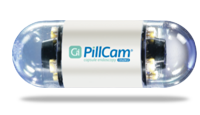Endoscopy can be more accurate than X-ray films.
Endoscopy (also referred to as upper endoscopy, esophagogastroduodenoscopy (EGD) or panendoscopy, is a procedure that enables our gastroenterologists to examine your esophagus, stomach and duodenum (first portion of the small intestine) using a thin flexible tube with its own lens and light source.
This procedure is helpful in evaluating symptoms of persistent upper abdominal pain, nausea, vomiting, difficulty swallowing or weight loss. It’s also the best test for finding the cause of upper intestinal bleeding. Learn more about the conditions treated by Borland Groover physicians.
Through this procedure, our gastroenterologists can diagnose:
- Dysphagia, or difficulty swallowing
- Ulcers — which can develop in the esophagus, stomach or duodenum
- Intestinal bleeding
- Barrett’s esophagus
- Tumors of the stomach or esophagus
- Indigestion
- Esophagitis, GERD, heartburn
- Gastritis
Endoscopy can also be used to treat certain conditions and prevent unnecessary surgical procedures.
For the safest examination, your stomach must be empty. Talk to your gastroenterologist about the recommended preparation for your procedure.
Remember to tell your physician of any medications, major illnesses or allergies you have so that you can be given instructions about these prior to the procedure. Relief is just a click away.
Capsule Endoscopy
Certain areas of your digestive tract, such as your small intestine, are much harder to reach with traditional endoscopy procedures. That’s where capsule endoscopy comes in.
During a capsule endoscopy, your gastroenterologist will take pictures of your digestive tract using a tiny wireless camera that sits inside an easy-to-swallow, vitamin-sized capsule. As the capsule travels through your digestive tract, thousands of pictures are taken and transmitted to a recorder worn on a belt around your waist.
Capsule endoscopy is often recommended to:
- Find the cause for gastrointestinal bleeding
- Diagnose inflammatory bowel disease (IBD) in the small bowel
- Diagnose cancer in the small bowel or other parts of the digestive tract
- Diagnose celiac disease and monitor this immune reaction to gluten
During the procedure, adhesive patches will be attached to your abdomen, each containing an antenna with wires that connect to the recorder worn around your waist. The camera will send images through the antenna to the recorder for collection and storage. Once the recorder is connected, you will be given the capsule camera to swallow with water. You will then go about your day as usual. The clinical staff will discuss any other instructions with you.
Your gastroenterologist will specify a date for you to return the recorder so that the footage can be examined for any abnormalities within your digestive tract.


